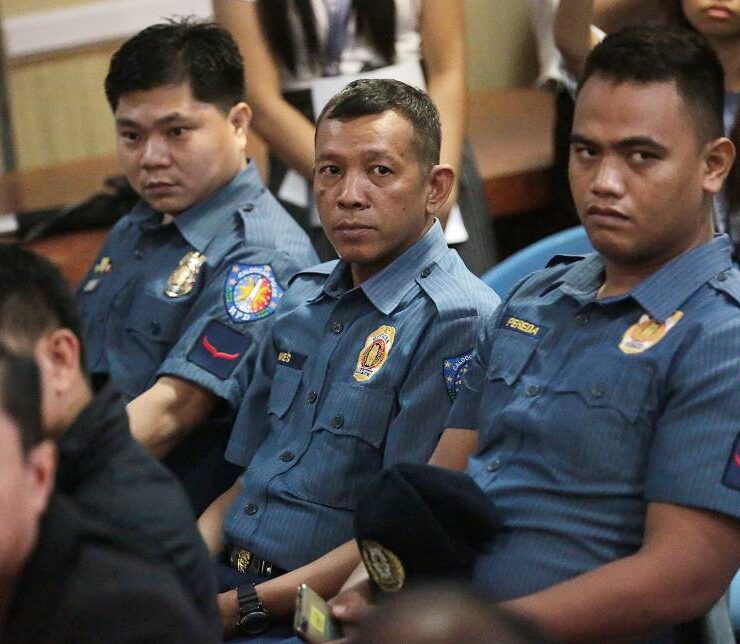WPS tit for tat: Sending Navy Floated as PH option

President Marcos could order the deployment of Philippine warships as a new policy option to respond to China’s use of its own navy in its increasing aggression in the West Philippine Sea, but that decision is solely up to the Commander in Chief, a senior Philippine Coast Guard (PCG) officer said on Saturday.
PCG spokesperson for the West Philippine Sea Commodore Jay Tarriela pointed out that the deployment of the People’s Liberation Army Navy (PLAN) ships “was now becoming part of the strategy of China in asserting their position in the West Philippine Sea,” waters within the country’s 370-kilometer exclusive economic zone (EEZ).
He said that the deployment of Philippine warships “could be considered a reciprocal act” since China was already doing it. Such a move is “dependent on the Armed Forces of the Philippines on how they would like to come up with policy recommendation to strengthen our position in the West Philippine Sea,” Tarriela said in a news forum.
“Now, if the question is if China is now deploying warships there, isn’t it about time for us to deploy warships too?” he asked.
“I’m not suggesting that we just deploy for the purpose of deploying warships,” Tarriela said. “What I said is it’s up to the Commander in Chief and Armed Forces of the Philippines to come up with a policy recommendation to have the reciprocity of deployment.”
The Philippines currently deploys “white hulls,” or coast guard vessels, not naval ships, for patrols and to perform law enforcement and other tasks in the West Philippine Sea to avoid militarizing the area.
This policy has been in place since June 2012, when a Philippine Navy ship attempted to apprehend Chinese fishermen on eight vessels involved in digging up giant clams and corals, and catching sharks illegally at Panatag (Scarborough) Shoal. They were blocked by other Chinese vessels until a two-month standoff eventually ended with China taking control of the atoll.
The Philippines maintains that is also adhering to the 2002 Declaration on the Conduct of Parties in the South China Sea between China and members of the Association of Southeast Asian Nations (Asean), where they agreed not to escalate their maritime conflicts.
China lays sweeping claims to the South China Sea and has overlapping maritime claims with the Philippines, Vietnam, Brunei and Malaysia.
Shadowing
“The utilization of white ship in the West Philippine Sea is not something that President Marcos decided on his own. This has been our stand for the past three administrations already as a result of the 2012 standoff,” Tarriela stressed.
His remarks followed the Dec. 4 shadowing of PCG vessels by Chinese PLAN near Panatag, also called Bajo de Masinloc. National Maritime Council spokesperson Alexander Lopez said it was the “first time (they) came quite near and participated in the blocking or aggressive movements” against PCG vessels.
The Chinese warship closely shadowed BRP Teresa Magbanua from a distance of only 270 meters while it attempted to approach a Bureau of Fisheries and Aquatic Resources (BFAR) vessel.
Sideswiped
Also on the same day, a China Coast Guard (CCG) ship harassed the BRP Melchora Aquino, BRP Cape Engaño and the BFAR vessels that were deployed at Escoda (Sabina) Shoal. A CCG vessel with bow No. 3302 sideswiped BFAR’s Datu Pagbuaya and fired its water cannon at it while it was conducting a routine patrol and delivering supplies to Filipino fishermen in the area.
Formal protest
The Philippines filed a formal diplomatic protest against the Chinese actions.
The United States, the Philippines’ treaty ally, and other countries also condemned China.
“The PRC’s (People’s Republic of China) unlawful use of water cannons and dangerous maneuvers disrupted a Philippine maritime operation on December 4, putting lives at risk,” American Ambassador MaryKay Carlson said in a statement on X.
“We condemn these actions and stand with our likeminded friends, partners, and allies in support of a [Free and open Indo-Pacific],” she said.
‘No legal basis’
The European Union, United Kingdom, Japan, France, Canada and Australia also expressed their concerns.
“We oppose any threat of use of force contrary to international law and recall the importance of resolving disputes through dialogue. We recall the decision rendered by the Arbitral Court on July 12, 2016,” the French Embassy in Manila said.
The 2016 arbitral award upheld Manila’s sovereign rights to its EEZ in the western region, which includes Bajo de Masinloc, and rejected China’s expansionist claim over the South China Sea for having “no legal basis” in international law.
The Chinese Embassy in Manila on Friday blasted the United States and its allies for expressing support to the Philippines, calling Carlson and the other countries “troublemakers to the peace and stability of the South China Sea.”
‘No right to interfere’
“The US Ambassador to the Philippines overlooked basic facts and made groundless accusations against China’s legitimate measures for protecting its territorial sovereignty and maritime rights and interests. We firmly oppose and condemn her accusation,” the embassy said.
It said the United States and its allies were not parties to the South China Sea dispute and “have no right to interfere” in the maritime conflict between China and the Philippines.
“We urge these countries to earnestly respect China’s territorial sovereignty and maritime rights and interests in the South China Sea, stop sowing discord and adding fuel to the fire, and stop being troublemakers for peace and stability in the South China Sea,” the embassy added.





















